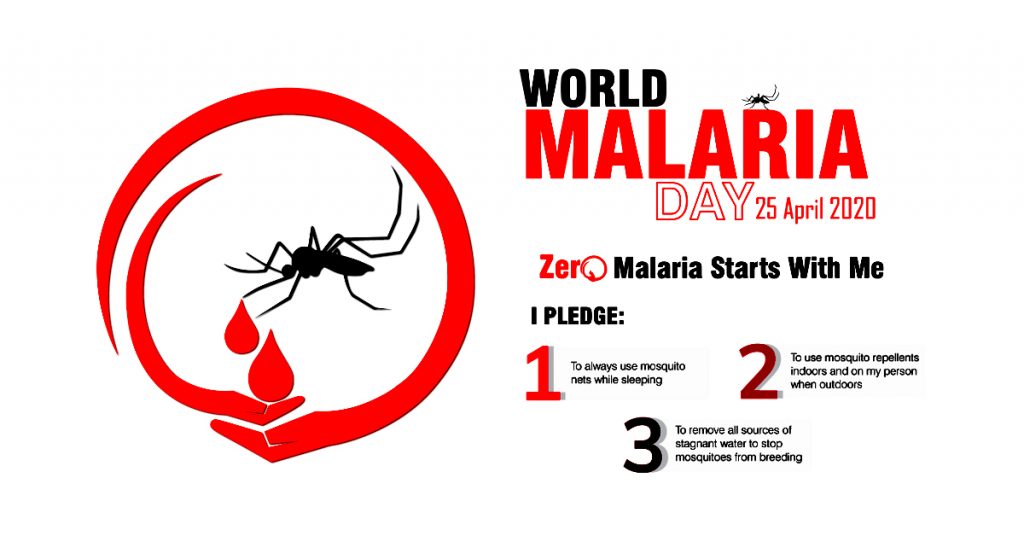Contents
- Cyclonic Storm ‘Burevi’
- WHO World Malaria Report 2020
CYCLONIC STORM ‘BUREVI”
Focus: GS1; Important Geophysical phenomena such as earthquakes, Tsunami, Volcanic activity, cyclone etc., geographical features and their location-changes in critical geographical features (including water-bodies and ice-caps) and in flora and fauna and the effects of such changes.
Why in News?
The Cyclonic Storm ‘Burevi’ over southwest Bay of Bengal moved west-northwestwards with a speed of 15 kmph during past six hoursand lay centered at 0530 hrs IST of today, the 02nd December 2020 over southwest Bay of Bengal, about 240 km east-southeast of Trincomalee (Sri Lanka), 470 km east-southeast of Pamban (India) and 650 km nearly east-northeast of Kanniyakumari (India).
About Cyclone Storm ‘BUREVI’
- After Nivar, cyclone ‘Burevi’ to affect Tamil Nadu, Kerala.
- The India Meteorological Department (IMD) on Monday announced that a cyclone brewing in the Bay of Bengal is likely to affect Tamil Nadu and Kerala, less than a week after cyclone Nivar wreaked havoc in the southern states.
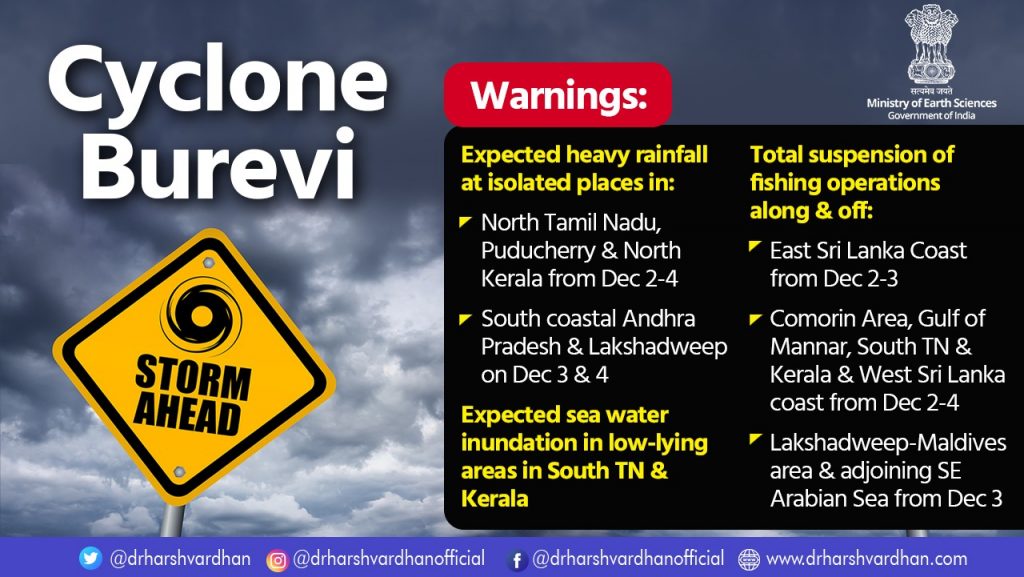
- The Cyclone Burevi will be the fifth cyclone forming over the North Indian Ocean this year, after Amphan, Nisarga, Gati and Nivar.
- It was named by the Maldives, the Burevi cyclone will be second cyclone forming in the southwest region of the Bay of Bengal.
- According to IMD projections, Burevi will be the least destructive of all five cyclones formed this year.
- The Burevi will be the fifth cyclonic storm to take shape into the North Indian Ocean this year.
- Earlier, cyclone Nivar, which made its landfall in Puducherry last week, Cyclone Gati, which made its landfall in Somalia, Cyclone Nisarga in Maharashtra and Cyclone Amphan, which hit eastern India in May, have wreaked havoc this year.
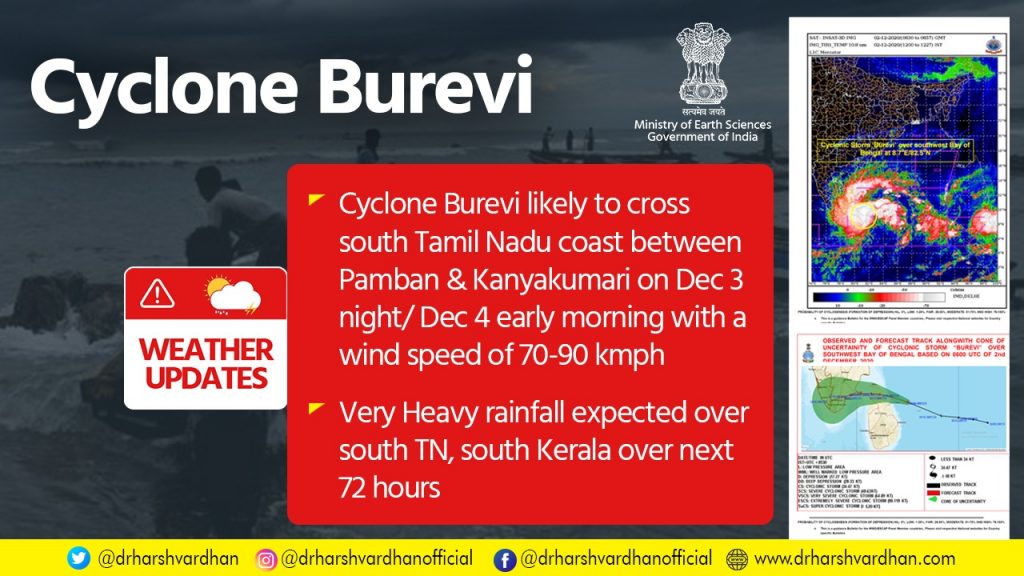
- The Burevi is named in accordance with the guidelines of the World Meteorological Organisation (WMO), according to which countries in every region are supposed to give names for cyclones.

- The North Indian Ocean region covers 13 countries and the cyclones formed over the Bay of Bengal and the Arabian Sea. The 13 members include Bangladesh, India, Maldives, Myanmar, Oman, Pakistan, Sri Lanka, Thailand, Iran, Qatar, Saudi Arabia, the UAE and Yemen.

About Naming of Cyclones
- The Cyclones around the world are named by RSMCs (Regional Specialized Meteorological Centres) and TCWCs (Tropical Cyclone Warning Centres).
- There are a total of six RSMCs and five TCWCs, including IMD.
- The IMD is assigned the duty to name cyclones that develop over north Indian ocean, including Arabian Sea and Bay of Bengal following standard procedure.
- It is also mandated to issue advisories in the region regarding the cyclonic storms.
- Usually, the names of the storms are kept in alphabetical order. For the Indian Ocean region, the naming of cyclones began in 2000 and formula was agreed in 2004.
- The Eight countries in the region — Thailand, Sri Lanka, Pakistan, Oman, Myanmar, Maldives, Bangladesh and India — suggest names, which are assigned sequentially whenever a cyclonic storm develops.
- The list was extended in 2018 when 5 new countries were added to the North Indian Ocean region.
- The countries include Iran, Qatar, Saudi Arabia, the UAE and Yemen.
- The India had reportedly proposed Gati (speed), Tej (speed), Marasu (musical instrument in Tamil), Aag (fire) and Neer (water), among others, for the new list.
- The names of the next few cyclones adopted by member countries in April 2020 are as follows
- Burevi (Maldives),
- Tauktae (Myanmar),
- Yaas (Oman), and
- Gulab (Pakistan).
Please click on this link and Refer detailed Explanation about Tropical Cyclones.
WHO WORLD MALARIA REPORT 2020
Focus: GS2; Issues relating to development and management of Social Sector/Services relating to Health, Education, Human Resources.
About World Malaria Report 2020
- Each year, more than 400 000 people die of malaria a preventable and treatable disease.
- An estimated two thirds of deaths are among children under the age of five.
- The 2020 edition of the World malaria report takes a look back at key events and milestones that helped shape the global response to the disease over the last 2 decades a period of unprecedented success in malaria control that saw 1.5 billion cases and 7.6 million deaths averted.
- This year’s report also features a special section on malaria and the COVID-19 pandemic, as well as a detailed analysis on progress towards the 2020 milestones of WHO’s global Malaria Strategy.

- As in past years, the report includes an up-to-date assessment of the burden of malaria at global, regional and country levels. It tracks investments in malaria programmes and research, as well as progress across all intervention areas: prevention, diagnosis, treatment and surveillance. There are also dedicated chapters on malaria elimination and key threats, such as insecticide and drug resistance.
- The report is based on information received from national malaria control programmes and other partners in 87 malaria-endemic countries; most of the data presented is from 2019.
About Malaria Disease
- The Malaria is a leading cause of human morbidity and mortality.
- Despite huge progress in tackling the disease, there are still 212 million new cases of malaria and 430,000 malaria-related deaths worldwide each year according to the World Health Organisation (WHO).

- The Malaria is caused by the Plasmodium parasite.
- The parasite can be spread to humans through the bites of infected mosquitoes.

- There are many different types of plasmodium parasite, but only 5 types cause malaria in humans.
- The Children under the age of 5 and pregnant women are most susceptible to the disease.
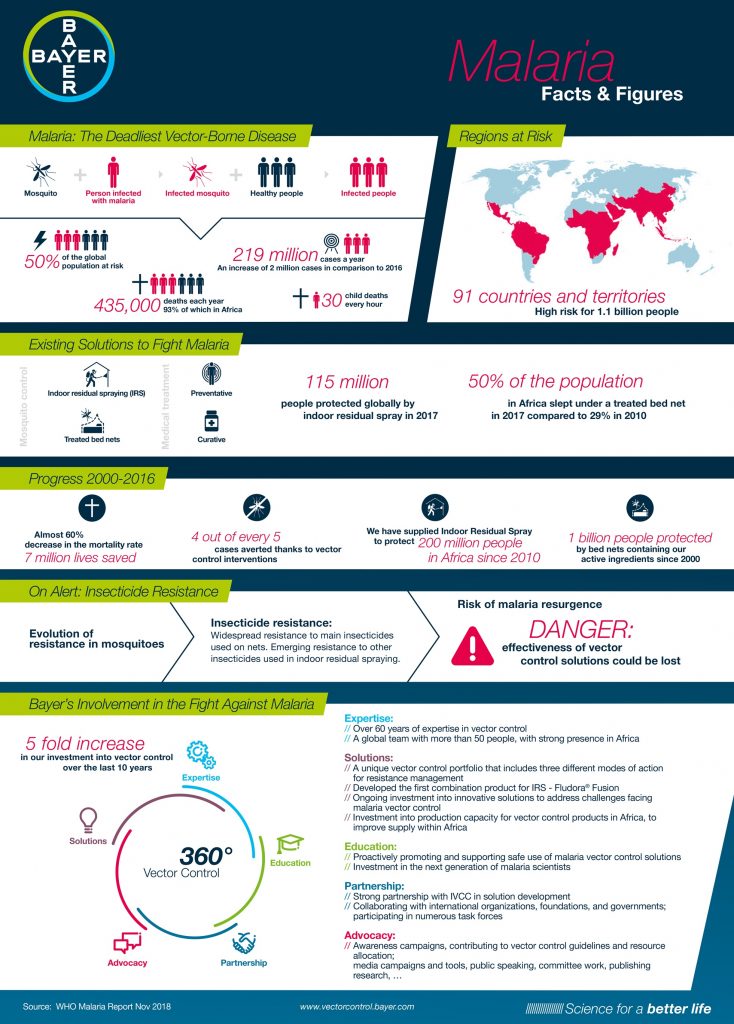
- The severity of malaria varies based on the species of plasmodium.
- The Symptoms are chills, fever and sweating, usually occurring a few weeks after being bitten.
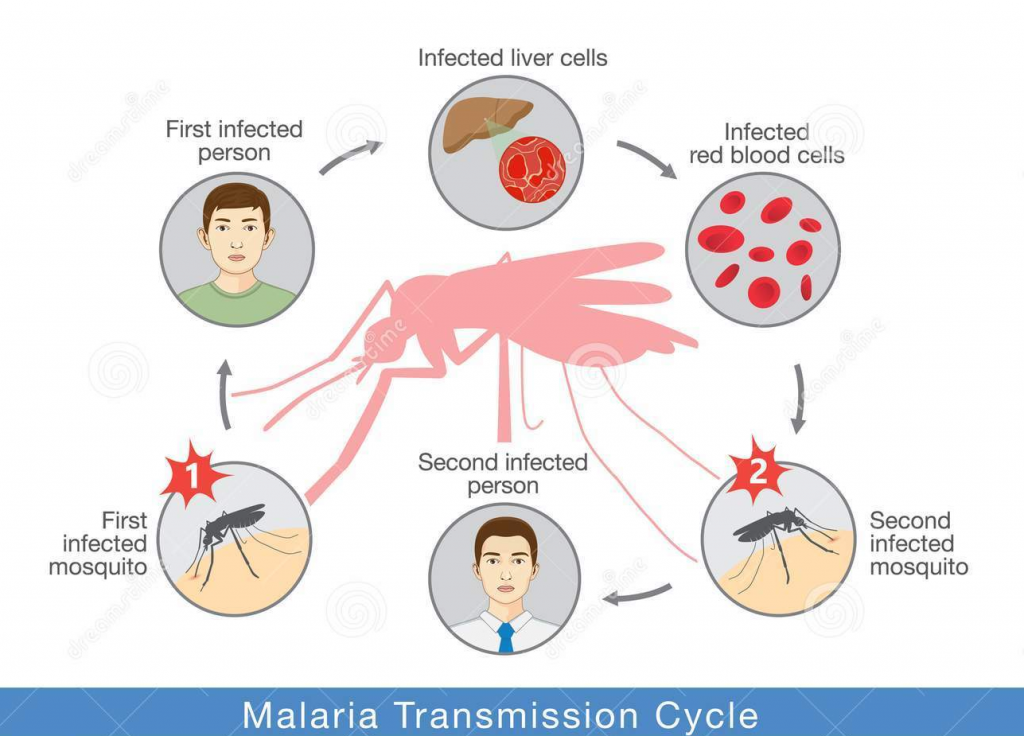
About Government of India Initiatives to Reduce Malaria.
- The India’s progress in fighting malaria is an outcome of concerted efforts to ensure that its malaria programme is country-owned and country-led, even as it is in alignment with globally accepted strategies.
- At the East Asia Summit in 2015, India pledged to eliminate the disease by 2030.
- Following this public declaration, India launched the five-year National Strategic Plan for Malaria Elimination.
- This marked a shift in focus from malaria “control” to “elimination”.
- The plan provides a roadmap to achieve the target of ending malaria in 571 districts out of India’s 678 districts by 2022.
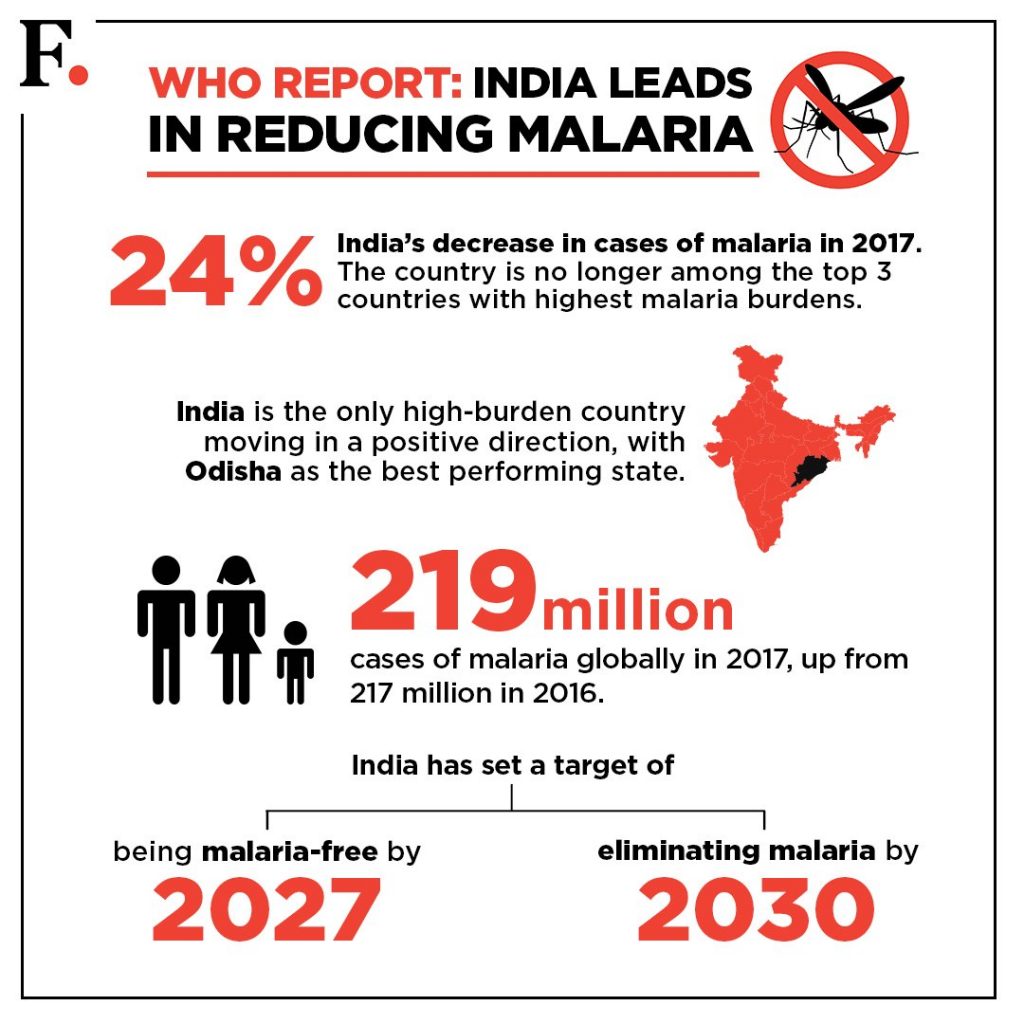
About Durgama Anchalare Malaria Nirakaran (DAMaN) initiative
- Among states, Odisha’s Durgama Anchalare Malaria Nirakaran (DAMaN) initiative is significant. The initiative aims to deliver services to the most inaccessible and hardest hit people of the State. The initiative has in-built innovative strategies to combat asymptomatic malaria.
- The programme is jointly implemented by Indian Council of Medical Research (ICMR) -National Institute of Malaria Research (ICMR-NIMR), National Vector Borne Disease Control Programme (NVBDCP), Odisha and Medicines for Malaria Venture (MMV).
About Indian Council of Medical Research (ICMR) ‘MERA’ Initiative
- The MERA India alliance holds utmost importance to the Union Ministry of Health and Family Welfare for the operational research. The World Health Organisation (WHO) had earlier appreciated India’s research in malaria and hence, the country now aims to ensure its elimination by 2030.
- The alliance was launched on the occasion of the World Malaria Day 2019.
Objectives of MERA Imitative
- The principal motive of the ‘MERA India’ alliance is to priorities, plan, conduct, and scale up research in a coordinated way to have a solid impact on the population who are at risk of malaria.
- India has made impressive progress in malaria control in the recent years. The malaria burden in India declined by over 80 percent from 2.03 million cases in 2000 to 0.39 million in 2018. Deaths by malaria also declined by over 90 percent from 932 deaths in 2000 to 85 in 2018.
Highlights of ‘MERA India’ alliance
- The National Vector Borne Diseases Control Program (NVBDCP) developed a comprehensive framework to achieve “Malaria free India by 2030”.
- The NVBDCP’s National Strategic Plan recognizes the critical role of research to support and guide malaria elimination efforts.
- The MERA India does not duplicate the international efforts to eliminate Malaria rather complement the efforts on a national scale.
- The alliance will facilitate trans-institutional coordination and collaboration around a collaborative research agenda.

About World Malaria Day
- The World Malaria Day is an international observance commemorated every year on 25 April and recognizes global efforts to control malaria.
- Globally, 3.3 billion people in 106 countries are at risk of malaria.
- In 2012, malaria caused an estimated 627,000 deaths, mostly among African children.
- The theme of World Malaria Day 2020 “Zero Malaria Starts with Me” is a movement dedicated to driving action and making change, and this starts with YOU!
